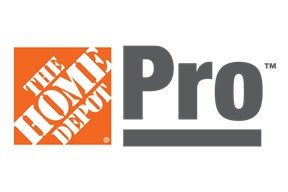With Tighter margins and higher rates, here’s how investors are pivoting.
Deals are not penciling. Prices are falling in more markets. Agents and mortgage brokers are getting skinnier and skinnier.
Bottom line? The markets are changing, and not always in the way investors expected.
At the start of the year, many anticipated that mortgage interest rates would finally begin to fall. Instead, rates have stayed higher for longer than forecast, putting continued pressure on borrowing costs. This has been compounded by the Federal Reserve’s decision to hold off on cutting the federal funds rate due to persistent inflation, keeping floating rate debt expensive.
Home prices, meanwhile, are starting to soften in more markets. But even with that dip, housing remains unaffordable for many prospective buyers, tempering demand. For investors, this creates a difficult environment: not only is it harder to find properties that cash flow well, but rising costs across the board—from materials to labor—are squeezing already tight margins.
Concurrently, cap rates remain lower than sellers would like, making it tougher to justify pricing in today’s lending climate. And for those following the Buy, Rehab, Rent, Refinance, and Repeat (BRRRR) strategy, viable markets are getting fewer.
All signs point to a more cautious, compressed investment landscape—one that demands creativity, resilience, and a close watch on economic indicators.
So, how are investors and market participants adapting?
Innovations That Are Working
Investors are adjusting to market changes in the following four ways.
First, investors are expanding their search for viable investments. They are looking out-of-area and out-of-state for deals when their local market doesn’t pencil or make financial sense to invest in at this time.
Second, tax strategy is playing a larger role in investment decisions. Investors are factoring in the benefits of bonus depreciation and cost segregation. Additionally, they are using short-term rentals to offset active income, provided they meet material participation requirements by actively managing the property.
Third, in markets that are becoming more balanced—or even becoming buyer’s markets—sellers must approach pricing more thoughtfully and strategically.
Fourth, investors are weighing the long-term value of a property as rents go up and debt goes down—even if cash flow is tight initially. That said, investors with strong cash flow should still consider value-add opportunities.
Moving Forward
Although making predictions is always risky, three trends are likely to continue for the near-term future:
- Mortgage rates will stay higher for longer.
- Markets will become more balanced.
- Inventory for sale will increase compared to the same time last year.
So, plan on the rate of price increases to slow—and even fall—in some markets.
Continuous Learning
Because market conditions are always changing, we need to be students of the market, look for trends, notice what other investors are doing to succeed, and plan. Good deals are getting harder to find and margins are being squeezed in existing deals. Investors are looking in more favorable markets, factoring tax strategies in deal analysis, being thoughtful about pricing when selling, and factoring the value over time of their investment. We can expect markets to continue to change, interest rates to stay higher for longer, more markets to become balanced, and available inventory to increase.
Keep yourself informed, stay flexible, and continue to innovate to win. To Your Success!
























0 Comments